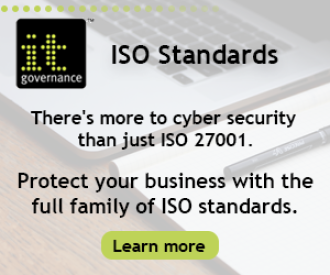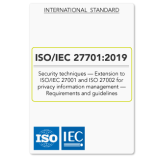Summary of Time’s “Inside Trump’s Long‑Awaited AI Strategy”, describing the plan’s lack of guardrails:
- President Trump’s long‑anticipated executive 20‑page “AI Action Plan” was unveiled during his “Winning the AI Race” speech in Washington, D.C. The document outlines a wide-ranging federal push to accelerate U.S. leadership in artificial intelligence.
- The plan is built around three central pillars: Infrastructure, Innovation, and Global Influence. Each pillar includes specific directives aimed at streamlining permitting, deregulating, and boosting American influence in AI globally.
- Under the infrastructure pillar, the plan proposes fast‑tracking data center permitting and modernizing the U.S. electrical grid—including expanding new power sources—to meet AI’s intensive energy demands.
- On innovation, it calls for removing regulatory red tape, promoting open‑weight (open‑source) AI models for broader adoption, and federal efforts to pre-empt or symbolically block state AI regulations to create uniform national policy.
- The global influence component emphasizes exporting American-built AI models and chips to allies to forestall dependence on Chinese AI technologies such as DeepSeek or Qwen, positioning U.S. technology as the global standard.
- A series of executive orders complemented the strategy, including one to ban “woke” or ideologically biased AI in federal procurement—requiring that models be “truthful,” neutral, and free from DEI or political content.
- The plan also repealed or rescinded previous Biden-era AI regulations and dismantled the AI Safety Institute, replacing it with a pro‑innovation U.S. Center for AI Standards and Innovation focused on economic growth rather than ethical guardrails.
- Workforce development received attention through new funding streams, AI literacy programs, and the creation of a Department of Labor AI Workforce Research Hub. These seek to prepare for economic disruption but are limited in scope compared to the scale of potential AI-driven change.
- Observers have praised the emphasis on domestic infrastructure, streamlined permitting, and investment in open‑source models. Yet critics warn that corporate interests, especially from major tech and energy industries, may benefit most—sometimes at the expense of public safeguards and long-term viability.
⚠️ Lack of regulatory guardrails
The AI Action Plan notably lacks meaningful guardrails or regulatory frameworks. It strips back environmental permitting requirements, discourages state‑level regulation by threatening funding withdrawals, bans ideological considerations like DEI from federal AI systems, and eliminates previously established safety standards. While advocating a “try‑first” deployment mindset, the strategy overlooks critical issues ranging from bias, misinformation, copyright and data use to climate impact and energy strain. Experts argue this deregulation-heavy stance risks creating brittle, misaligned, and unsafe AI ecosystems—with little accountability or public oversight

A comparison of Trump’s AI Action Plan and the EU AI Act, focusing on guardrails, safety, security, human rights, and accountability:
1. Regulatory Guardrails
- EU AI Act:
Introduces a risk-based regulatory framework. High-risk AI systems (e.g., in critical infrastructure, law enforcement, and health) must comply with strict obligations before deployment. There are clear enforcement mechanisms with penalties for non-compliance. - Trump AI Plan:
Focuses on deregulation and rapid deployment, removing many guardrails such as environmental and ethical oversight. It rescinds Biden-era safety mandates and discourages state-level regulation, offering minimal federal oversight or compliance mandates.
➡ Verdict: The EU prioritizes regulated innovation, while the Trump plan emphasizes unregulated speed and growth.
2. AI Safety
- EU AI Act:
Requires transparency, testing, documentation, and human oversight for high-risk AI systems. Emphasizes pre-market evaluation and post-market monitoring for safety assurance. - Trump AI Plan:
Shutters the U.S. AI Safety Institute and replaces it with a pro-growth Center for AI Standards, focused more on competitiveness than technical safety. No mandatory safety evaluations for commercial AI systems.
➡ Verdict: The EU mandates safety as a prerequisite; the U.S. plan defers safety to industry discretion.
3. Cybersecurity and Technical Robustness
- EU AI Act:
Requires cybersecurity-by-design for AI systems, including resilience against manipulation or data poisoning. High-risk AI systems must ensure integrity, robustness, and resilience. - Trump AI Plan:
Encourages rapid development and deployment but provides no explicit cybersecurity requirements for AI models or infrastructure beyond vague infrastructure support.
➡ Verdict: The EU embeds security controls, while the Trump plan omits structured cyber risk considerations.
4. Human Rights and Discrimination
- EU AI Act:
Prohibits AI systems that pose unacceptable risks to fundamental rights (e.g., social scoring, manipulative behavior). Strong safeguards for non-discrimination, privacy, and civil liberties. - Trump AI Plan:
Bans AI models in federal use that promote “woke” or DEI-related content, aiming for so-called “neutrality.” Critics argue this amounts to ideological filtering, not real neutrality, and may undermine protections for marginalized groups.
➡ Verdict: The EU safeguards rights through legal obligations; the U.S. approach is politicized and lacks rights-based protections.
5. Accountability and Oversight
- EU AI Act:
Creates a comprehensive governance structure including a European AI Office and national supervisory authorities. Clear roles for compliance, enforcement, and redress. - Trump AI Plan:
No formal accountability mechanisms for private AI developers or federal use beyond procurement preferences. Lacks redress channels for affected individuals.
➡ Verdict: EU embeds accountability through regulation; Trump’s plan leaves accountability vague and market-driven.
6. Transparency Requirements
- EU AI Act:
Requires AI systems (especially those interacting with humans) to disclose their AI nature. High-risk models must document datasets, performance, and design logic. - Trump AI Plan:
No transparency mandates for AI models—either in federal procurement or commercial deployment.
➡ Verdict: The EU enforces transparency, while the Trump plan favors developer discretion.
7. Bias and Fairness
- EU AI Act:
Demands bias detection and mitigation for high-risk AI, with auditing and dataset scrutiny. - Trump AI Plan:
Frames anti-bias mandates (like DEI or fairness audits) as ideological interference, and bans such requirements from federal procurement.
➡ Verdict: EU takes bias seriously as a safety issue; Trump’s plan politicizes and rejects fairness frameworks.
8. Stakeholder and Public Participation
- EU AI Act:
Drafted after years of consultation with stakeholders: civil society, industry, academia, and governments. - Trump AI Plan:
Developed behind closed doors with little public engagement and strong industry influence, especially from tech and energy sectors.
➡ Verdict: The EU Act is consensus-based, while Trump’s plan is executive-driven.
9. Strategic Approach
- EU AI Act:
Balances innovation with protection, ensuring AI benefits society while minimizing harm. - Trump AI Plan:
Views AI as an economic and geopolitical race, prioritizing speed, scale, and market dominance over systemic safeguards.
⚠️ Conclusion: Lack of Guardrails in the Trump AI Plan
The Trump AI Action Plan aggressively promotes AI innovation but does so by removing guardrails rather than installing them. It lacks structured safety testing, human rights protections, bias mitigation, and cybersecurity controls. With no regulatory accountability, no national AI oversight body, and an emphasis on ideological neutrality over ethical safeguards, it risks unleashing AI systems that are fast, powerful—but potentially misaligned, unsafe, and unjust.
In contrast, the EU AI Act may slow innovation at times but ensures it unfolds within a trusted, accountable, and rights-respecting framework. U.S. as prioritizing rapid innovation with minimal oversight, while the EU takes a structured, rules-based approach to AI development. Calling it the “Wild Wild West” of AI governance isn’t far off — it captures the perception that in the U.S., AI developers operate with few legal constraints, limited government oversight, and an emphasis on market freedom rather than public safeguards.
A Nation of Laws or a Race Without Rules?
America has long stood as a beacon of democratic governance, built on the foundation of laws, accountability, and institutional checks. But in the race to dominate artificial intelligence, that tradition appears to be slipping. The Trump AI Action Plan prioritizes speed over safety, deregulation over oversight, and ideology over ethical alignment.
In stark contrast, the EU AI Act reflects a commitment to structured, rights-based governance — even if it means moving slower. This emerging divide raises a critical question: Is the U.S. still a nation of laws when it comes to emerging technologies, or is it becoming the Wild West of AI?
If America aims to lead the world in AI—not just through dominance but by earning global trust—it may need to return to the foundational principles that once positioned it as a leader in setting international standards, rather than treating non-compliance as a mere business expense. Notably, Meta has chosen not to sign the EU’s voluntary Code of Practice for general-purpose AI (GPAI) models.
The penalties outlined in the EU AI Act do enforce compliance. The Act is equipped with substantial enforcement provisions to ensure that operators—such as AI providers, deployers, importers, and distributors—adhere to its rules. example question below, guess what is an appropriate penality for explicitly prohibited use of AI system under EU AI Act.
A technology company was found to be using an AI system for real-time remote biometric identification, which is explicitly prohibited by the AI Act.
What is the appropriate penalty for this violation?
A) A formal warning without financial penalties
B) An administrative fine of up to €7.5 million or 1% of the total global annual turnover in the previous
financial year
C) An administrative fine of up to €15 million or 3% of the total global annual turnover in the previous
financial year
D) An administrative fine of up to €35 million or 7% of the total global annual turnover in the previous
financial year
What are the benefits of AI certification Like AICP by EXIN
Think Before You Share: The Hidden Privacy Costs of AI Convenience
The AI Readiness Gap: High Usage, Low Security
Mitigate and adapt with AICM (AI Controls Matrix)
DISC InfoSec’s earlier posts on the AI topic
Secure Your Business. Simplify Compliance. Gain Peace of Mind
InfoSec services | InfoSec books | Follow our blog | DISC llc is listed on The vCISO Directory | ISO 27k Chat bot | Comprehensive vCISO Services | ISMS Services | Security Risk Assessment Services | Mergers and Acquisition Security






























